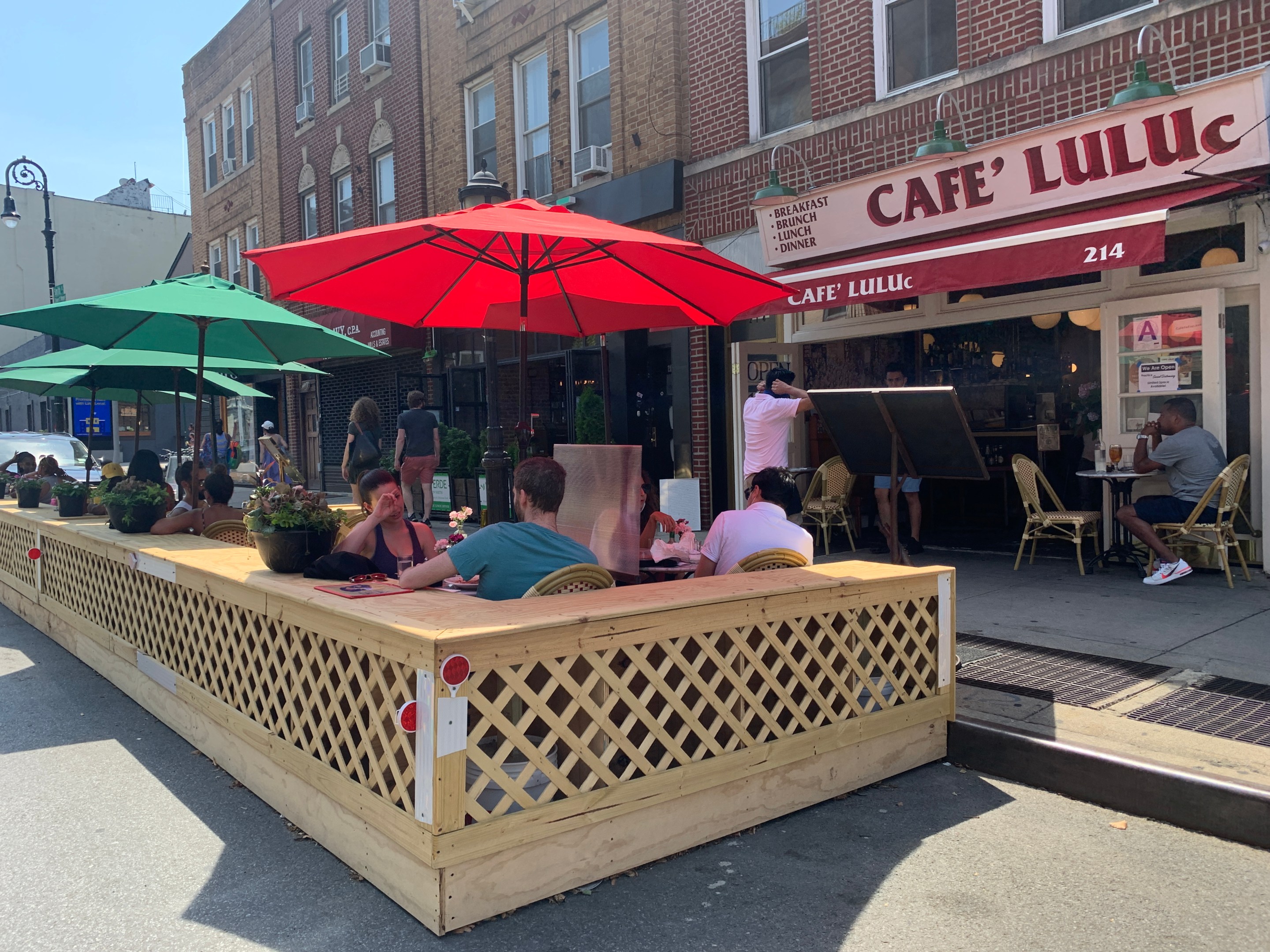Loading zones that freight companies — or services like UberEats and DoorDash — could reserve for several minutes for a fee. Drop-off zones for taxis or rideshare — also possibly monetized. In-street bike or garbage corrals — or “streeteries” or parklets.
These are innovations that might be coming soon to a street near you — or, in the case of the “streetery,” may have already arrived as an anti-COVID measure. That’s because the future of curbs in New York and other cities will be as dynamic, flexible spaces for a variety of activities — with a concomitant rollback of space for the most static and inefficient use, private car storage, according to speakers at Transportation Alternatives’s Vision Zero Cities Conference.
That hopeful future might seem like a far-off dream for those who have sat through interminable community-board meetings where people have fought over the last inch of parking. But it’s probably achievable in the next 10 to 15 years — because technology and financial incentives will drive it, speakers said. And it would make streets safer and slower — by reducing conflicts such as taxis dropping off in bike lanes and double-parked delivery trucks, and allowing more sidewalk space for pedestrians.
At a panel on Tuesday, “Curbing Conflict: Design Solutions for Equitable Curbside Access,” five practitioners from different parts of the transportation world mapped out a scenario for our sidewalks that will be driven by such forces as declining car ownership, a drive for accessibility, e-commerce deliveries, robotization, and smart-phone apps.
“Thirty times as many people are handled in a parking space than a private automobile, and we can do it more safely and equitably,” said Jason Schrieber, senior principal at Stantec's Urban Places, an urban design and planning firm, describing a vision in which a part of a block would act as a “terminal” for servicing businesses or residences. “The pace of change is fast,” he added.
The use of curbside space has been an issue of hot contention in New York City. At least two community boards in Manhattan have passed resolutions asking the Department of Transportation to study curbside uses with an eye toward expanding amenities such as loading zones, parklets and the like. But the idea that public space might be used for public purposes — rather than private car storage — has engendered furious pushback from local car drivers. The panel's evident belief that commercial demand and technology would push the city to embrace more varied curbside uses provided a refreshing contrast to the wearying and retrograde thrust of local parking politics.
Dawn Miller, head of policy and partnerships at the data firm Coord, said that mobile apps would soon direct deliverers — not just those in trucks, but also those in smaller vehicles — to available spaces in the last mile before a stop. Such precision would help eliminate hazards like parking in bike or bus lanes. “We haven’t rematched our curb allocations to respond to what we need,” she said, but added that enforcement — tickets — would likely remain in the picture for violators.
For Joseph Juhnke, vice president of technology strategy at CarrierDirect, a logistics consultancy for the trucking industry, pricing and efficiency will drive will drive both big delivery firms such as FedEx, Amazon and UPS and gig-economy independent contractors, such as drivers for UberEats or DoorDash to seek accommodations such as loading zones at curbside. The large firms factor in the cost of the many tickets their vehicles get into the cost of business, but the small fry are getting killed by such fines. The efficiency of a priced curb zone could help both kinds of operators, especially the large ones. “If you can reduce a delivery time by one minute, that’s a billion dollars,” he said of big trucking companies.
Pricing the curb would entail a balancing act for different users, the panelists agreed. Persons with disabilities, for example, should have complimentary access.
Jessica Cronstein, a senior urban designer at the DOT, said that the agency has been looking to paint and gravel to change the geometry of streets to make them more accessible, but “we’re still not there.” She said that the city’s sidewalks did not meet the needs of pedestrians even before COVID, but with such innovations as open streets and restaurant streets, “it’s an exciting time.”
But everyone agreed that, in the future of curbs with what they called “amenitized space,” pedestrians would win.
“Twenty-seven percent of land use is our streets,” Cronstein said. “That’s just a huge opportunity.”
TransAlt’s Vision Zero Cities conference continues online through Oct. 23. For info, click here.






